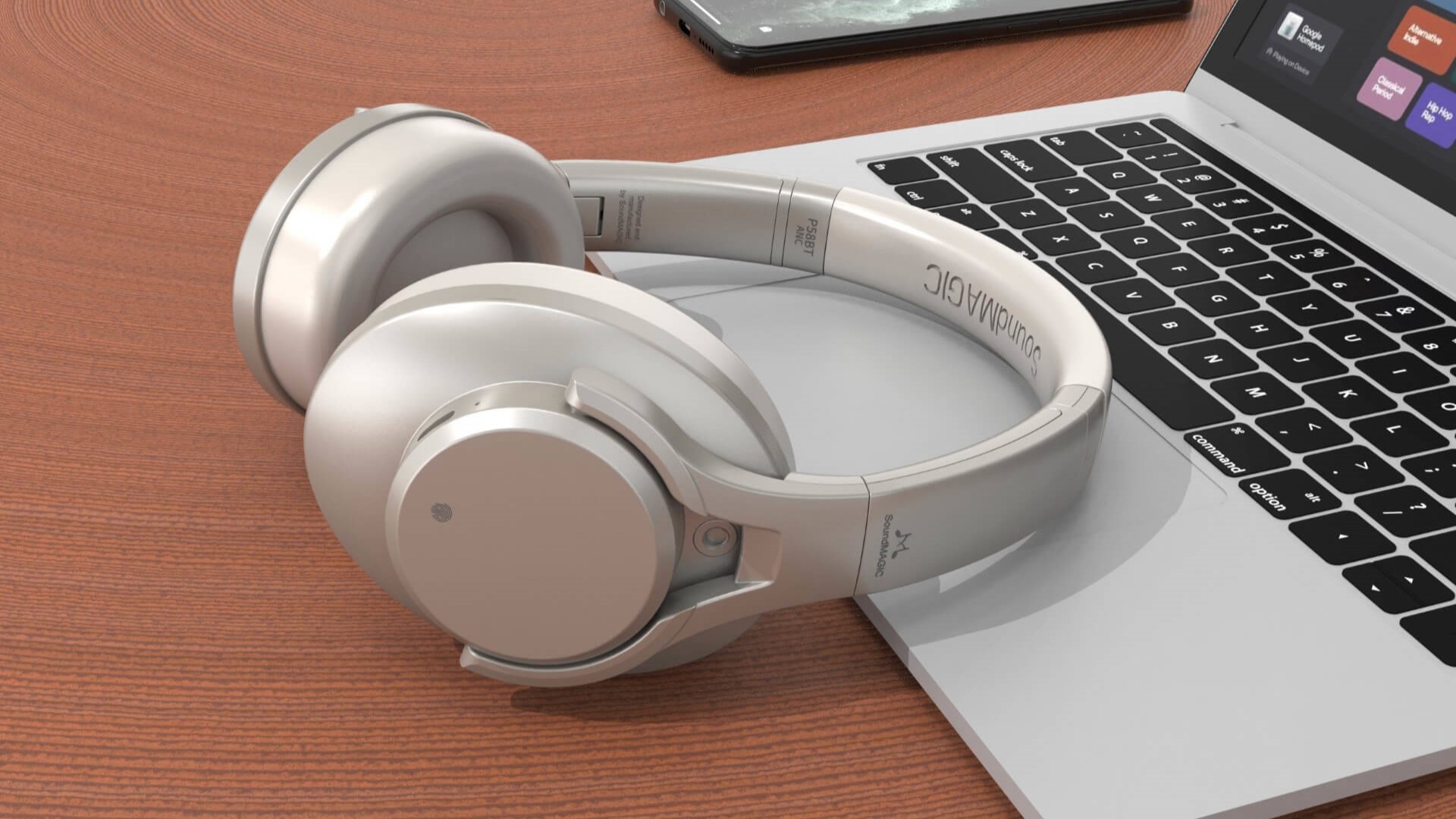The SoundMAGIC P58BT ANC are a compelling option if you’re considering an affordable pair of ANC cans, but the gaming mode fails to impress
- Manufacturer: SoundMAGIC
- Model: P58BT
- Type: Bluetooth Low-latency ANC Headphones
- Price: £79.99 MSRP (£55.98-Silver / £79.98-Black hifiheadphones.co.uk)
- Supported Connections: Bluetooth 5.3 (SBC/AAC), 3.5mm analogue
- Reviewed on: Windows 11 PC, Honor Magic 5 Pro
- Supplied by: SoundMAGIC
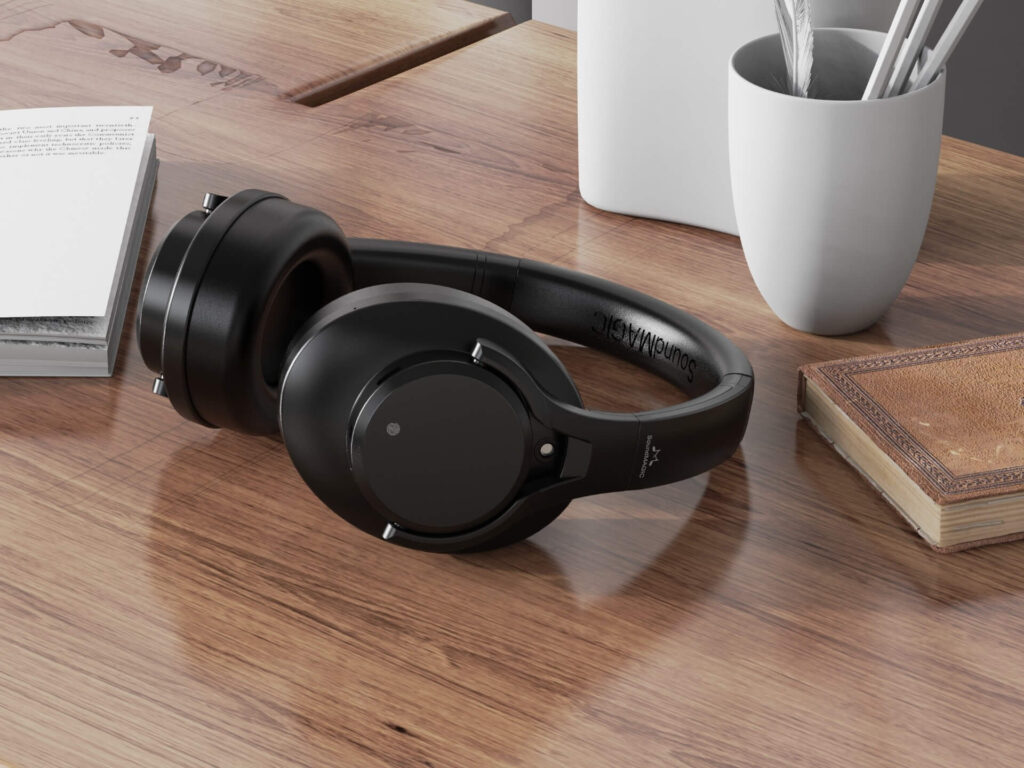
SoundMAGIC P58BT ANC Review
Overview
SoundMAGIC is a Chinese brand that is rapidly gaining recognition for its affordable but high-performant headphones. Long gone are the days when Chinese-designed products conjured up images of poor-quality knock-offs; The P58BT ANC are a serious competitor against far more expensive alternatives from Sony and Bose. Considering the price point, these headphones are feature-rich, with effective ANC, ambient passthrough, Bluetooth 5.3, and a low-latency gaming mode.
SoundMAGIC describes the audio tuning as accurately reproducing human voices and delivering detailed and undistorted highs. I can confirm that the sound profile definitely favours the higher end, with bright and crisp audio from the upper-mids right up to a glistening delivery of treble. However, although these headphones certainly aren’t missing bass, they aren’t particularly punchy. This is a highly subjective area, though.
The P58BT ANC deliver superior clarity, avoiding the pitfall of having bass that drowns out and muddies the sound with over-exaggerated lows. To my taste, though, they have gone too far the other way – the emphasis on higher frequencies overshadows the lower end and left me wanting a bit more oomph when I was watching movies. Wearing them when gaming, however, definitely works in the P58BT ANC’s favour. Distinct audio cues are a vital weapon in a gamer’s arsenal, and the P58BT ANC delivers when it matters.
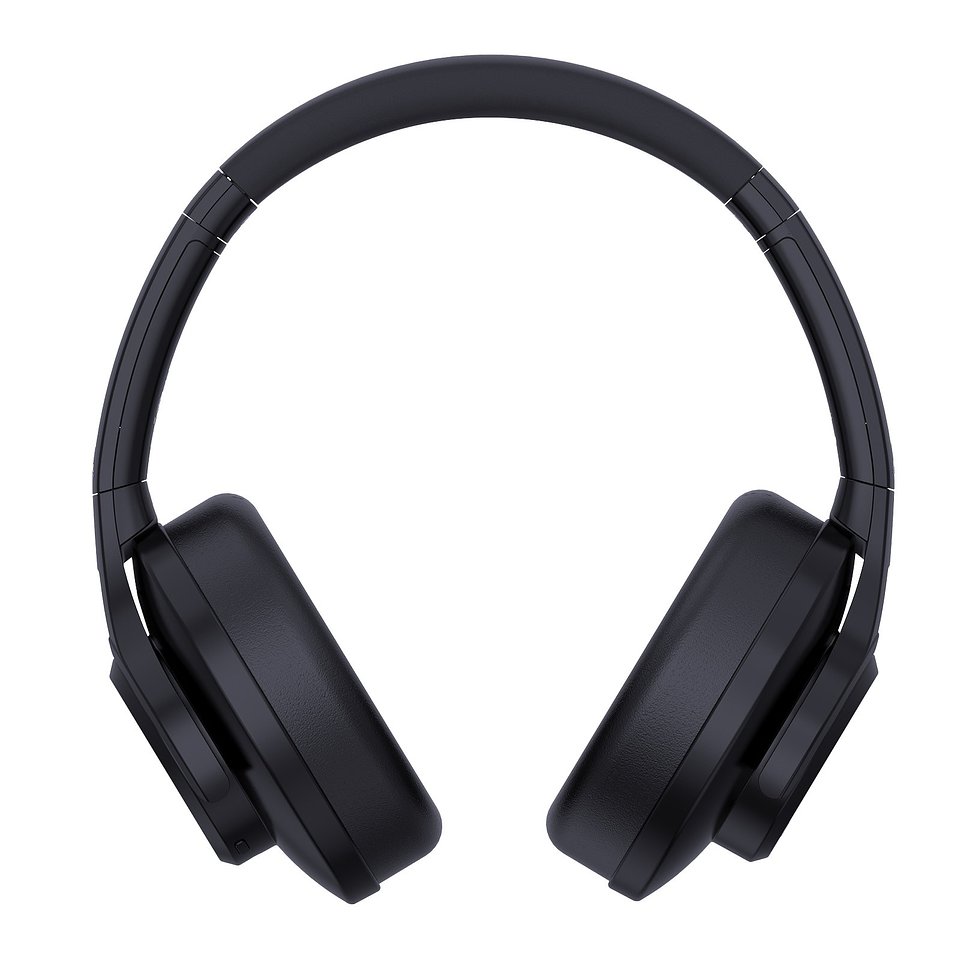
Design and Build
The P58BT ANC have a relatively simple aesthetic that’s unlikely to draw attention, but they are still a significant step above the manufactured e-waste that some companies produce. Our review sample headphones are black, but they also come in a very attractive silver which, as well as being cheaper at the time of publication, allows the subtler details and grooves of the design to become visible.
At 311 grams, the P58BT ANC aren’t exactly heavy, but they feel reassuringly weighty, unlike many other lower-end headphones that can feel flimsy by comparison. They are very well crafted, with solid plastics used in the housing that held up exceptionally well to my testing, which involves vigorous squeezing, bending and flexing the headphones to reveal any creaking or cracking. The P58BT ANC passed with flying colours, feeling like a much more expensive pair of headphones than they are.
There is also a useful folding mechanism so you can slip these into your bag more easily, and the earcups can be swivelled flat to lay against your chest if you need, but they swivel outwards, rather than inwards, which is less practical. Although I don’t mind the understated design, it’s not intuitive just by appearance which side is left or right, backed up by my familial test group all putting them on the wrong way round at first attempt (mainly due to the way the earcups swivel outwards.)
Providing a snug fit, the earcup padding is medium/firm, and comfortably encapsulates my modest-sized ears. Clothed in a soft PU leatherette, it’s a very nice feeling pair of cans on-ear, though they have the potential to be sweaty in the hot summer months. The hinged forks of the earcups work harmoniously with the gentle clamping force of the headband, giving the headphones a solid seal without any discomfort, even after lengthy listening sessions.
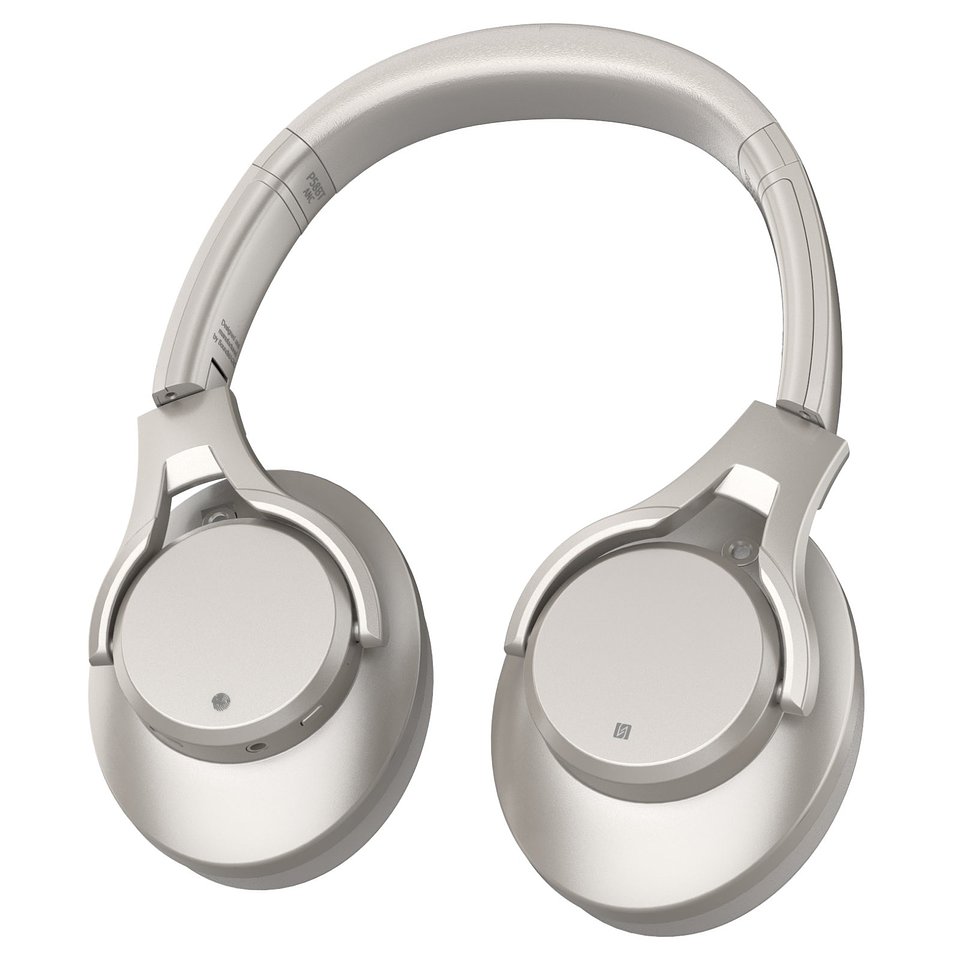
What’s in the Box
- P58BT ANC headphones
- USB-A to USB-C charging cable
- 3.5mm analogue audio cable
- User manual
- Soft carrying case
Connectivity
The P58BT ANC headphones can be connected via both Bluetooth 5.3 and 3.5mm analogue. The Bluetooth range is decent, comparing well with most other BT headphones I’ve reviewed.
Pairing the P58BT ANC is painless, with them automatically entering pairing mode at first power-on. You can also pair them using the NFC tag on the earcup, but the Bluetooth pairing is so seamless it’s not a significant addition. You can also connect via the included 3.5mm audio jack. Using the jack deactivates the ANC and ambient modes, rendering the headphones entirely passive. This can be useful if you run out of battery (though the exceptional battery life makes this unlikely), but the more desirable reason is the reduced latency. Impressively, the sound quality is consistent with the Bluetooth connection, indicating that these headphones don’t rely on additional processing to achieve the sound profile.
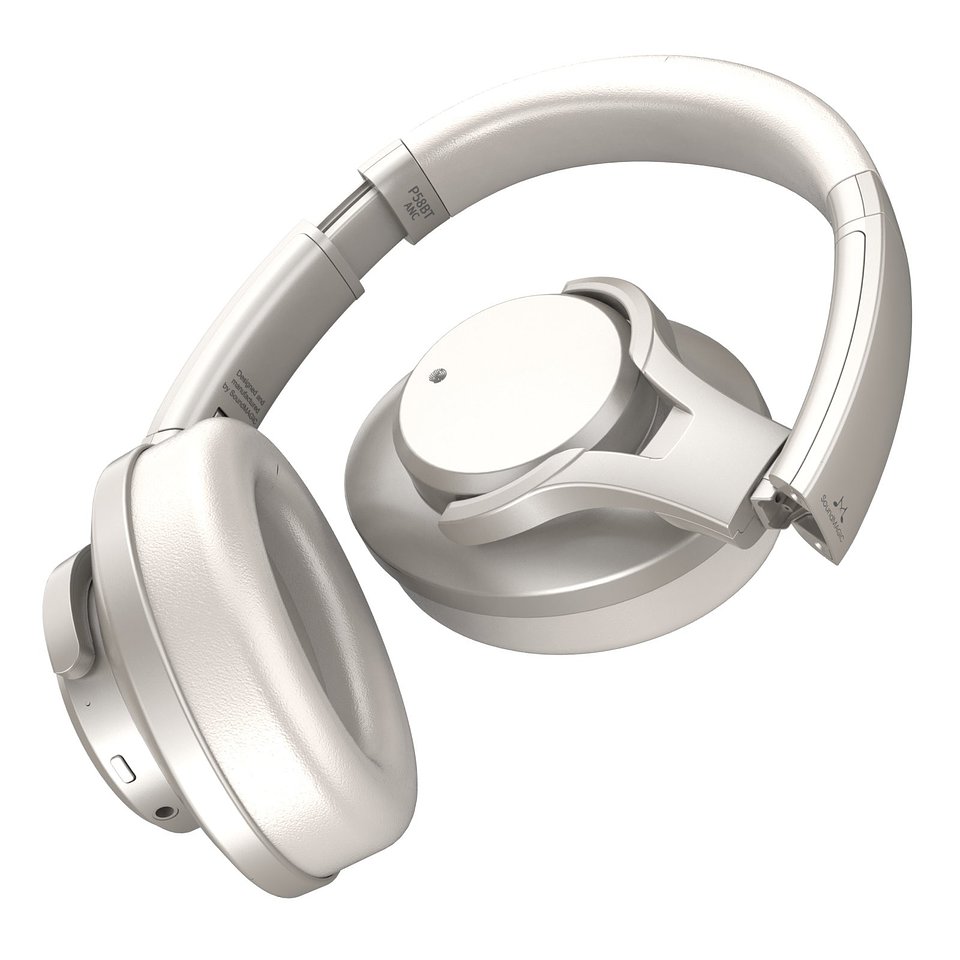
Features and Controls
The P58BT ANC uses touch controls on the earcups, but I found them to be temperamental at best. A single button powers on, pairs, and switches audio modes between ANC off, on and ambient, and a quick double press switches on the gaming mode. Touch controls are seen as a premium feature, but even on the best, most responsive implementations, I’ve never been a fan. After fiddling about, randomly swiping my ears and referring to the manual repeatedly, I settled on either grabbing my phone from my pocket or using my desktop to adjust the volume or control my player. Thankfully, the button for switching between the ANC modes is physical, as I used this more frequently.
There is no app for the P58BT ANC, so there’s no manufacturer-provided equaliser, however, my phone has a decent native EQ, so that wasn’t an issue, and Windows also has numerous methods to control the EQ. I’d have liked some onboard sound profiles for ease of use, but for the price, I can’t complain too much.
Gaming Mode
I had high hopes for the gaming mode having tested another pair of headphones that utilised this to great effect, but the P58BT ANC failed to impress. Using Bluetooth, the default latency measured up to 220 ms, which is a lengthy delay. With gaming mode turned on, this is reduced, but only to around 90-100 ms, which isn’t fast enough for timing-sensitive rhythm games like Geometry Dash. To SoundMAGIC’s credit, it does reduce the latency a lot, but it’s not a game changer like I was hoping. That said, with gaming mode on it’s still good enough for most gaming, and whilst watching movies there was only a slight disconnect between seeing actors’ mouths move and hearing their voices, and they are generally equal or better than most Bluetooth headphones. As expected, wired via the jack eliminates delay, but that defeats the purpose of wireless gaming headphones.

Sound Quality
If we’re looking at the budget end of the headphone scale, SoundMAGIC has created a compelling sound signature with lots of detail across the range, and great sound separation. Unfortunately, for my tastes, this comes at the expense of impact at the lower end. They are fantastic if you’re listening to podcasts (for me, my umpteenth listen-through of Ricky Gervais’ XFM radio show); Voices come through with outstanding clarity.
Switching to music, however, the lack of punch is detrimental. Anything with a predominantly bass-heavy focus feels underwhelming, and even though you can clearly pick out notation, it’s sapped of energy and makes for unexciting listening. I did balance this out somewhat with the judicious use of an external EQ, but this affected the rest of the sound signature, dulling the treble, particularly. As I mentioned earlier, this is subjective, and if you find the likes of Beats or, at the budget end, Skull Candy headphones to be too aggressive or swampy in their bass delivery, these could be a refreshing change that you may prefer.
An area where I was impressed by the P58BT ANC is the breadth of the soundstage, with sound pleasingly projected around you. Although the imaging isn’t quite as accurate as more expensive headphones, this is a solid effort for budget headphones.

The wide soundstage and mid-focused tuning definitely have advantages for gaming, though. Directional cues are easy to pinpoint, and the clarity of the mid-range emphasises those sounds that competitive shooter gamers in particular are listening out for. Unfortunately, the latency lets them down here. When gamers are optimising their systems to minimise end-to-end latency across every peripheral and component, adding 100 ms of audio delay into the loop isn’t an acceptable trade to make these a recommendation. Likewise, for fans of the more cinematic and bombastic single-player experiences, the latency won’t be as big an issue (I routinely use Bluetooth headphones for gaming), but then the lack of lower-end grunt comes into play.
Don’t get me wrong, these aren’t bad-sounding headphones at all, especially in the budget pricing segment, but they aren’t a jack of all trades. That said, there is sure to be a subset of consumers for whom the excellent detail across the range with reduced bass is ideal, and I must stress that they aren’t missing bass altogether, but I’ve been spoiled by premium, larger driver headphones that can produce clarity alongside impactful lower frequencies.
A quick note regarding the microphone quality – these are tiny receivers mounted far away from your mouth, so in anything but a quiet room they pick up a lot of external sound. The sound pickup is acceptable for a quick phone call, but for gaming, you’re going to want a good-quality standalone mic,
Overall, the P58BT ANC hold up extremely well against competitors at this price point. I’ve tested similarly priced headphones that I wouldn’t waste my time reviewing and certainly would never recommend. As for the P58BT ANC, they have their use case, especially in the budget ANC sector.

Active Noise Cancellation Quality
For sub-£80 headphones, the ANC performance of the P58BT ANC is not too shabby. It can dampen the throb of public transport reasonably well, and it copes very well with the fans of my PC when gaming. Combined with the secure fit of the earcups, I was reasonably impressed with the ANC on offer. It’s not a patch on the best-in-class headphones out there, but it’s a welcome feature nonetheless.
The ambient passthrough, however, is up there with the best implementations I’ve listened to. Outside sounds are funneled into the headphones at a perfect level, minimising the hiss that often comes with ambient passthrough, as well as delivering a full-bodied, rounded and mostly accurate rendition of what is being relayed into the headphones. This provides awareness when listening to your media of choice without ruining the sound, and external sounds retain fairly accurate directional properties – I often find it hard to pinpoint the source of ambient sound with other headphones, whereas, with the P58BT ANC, I could easily discern where approaching cars were coming from, for example.
Battery Life
The P58BT ANC have excellent battery life, providing up to 60 hours of playback with ANC turned off (which I found to be accurate, from my testing), and up to 35 hours with ANC or Ambient passthrough enabled.
This is excellent for an affordable pair of headphones, and you can comfortably go a couple of weeks between charges (though the battery slowly discharges when not in use). I have been using these headphones for several months, and only charge them once a week, with a charge whilst connected to my PC taking around an hour to bring them back up to full capacity. This should be convenient enough for pretty much anyone and is excellent at this price.
Summary
For under £80, you can’t go wrong with the P58BT ANC, and if you get a deal like is available with the silver variant, you’d be hard-pressed to find a better pair of ANC headphones in the sub-£60 category.
The sound they produce is clean and precise, especially for gaming and podcasts where the clarity of the mids has room to shine. Bass-addicts aren’t as well catered to, as the P58BT ANC lacks presence at the low end, however, the lower frequencies are delivered with confidence, enabling you to pick out individual notes amongst bass drum kicks; Entry-level headphones often struggle in this regard, with low frequencies mushed into an unintelligible mess. The P58BT ANC fill a crucial niche here, that will surely appeal to many listeners.
I’m not a huge fan of the touch controls, but the decent ANC and passive noise isolation, excellent ambient passthrough, and superb battery life ensure these are feature-packed headphones for a budget-friendly price. If the gaming mode could knock off another 50 ms of latency, I’d wholeheartedly recommend these as a great set of wireless gaming headphones, but at 100 ms of delay, these are only going to be acceptable if you aren’t relying on split-second timing.
Overall, I wouldn’t recommend these to everyone, but in terms of value and, assuming you fit the niche, these are great headphones that you won’t be disappointed with.
About SoundMAGIC
Founded in 2005 by acoustic design engineer Tony Xu, SoundMAGIC design and manufacture award-winning headphones and earphones. By utilising the latest technology and best materials, SoundMAGIC are continuously improving and updating these products based on customer feedback. With awards and recommendations from What Hi-Fi?, Stuff magazine, T3, Trusted Review and AV Forums, SoundMAGIC headphones deliver immersive sound quality, outstanding durability and stylish aesthetics, consistently outperforming similar products from established competitors.
SoundMAGIC’s range of headphones is extensive and growing all the time! Their flagship earphones, the E Series, are fun and exciting, while producing clarity and definition rivalling earphones twice the price. The P Series comprises of on-ear headphones that are perfect for the daily commute or a session in the gym. For serious at-home listening, the HP series deliver high fidelity sound that will satisfy any audiophile.
